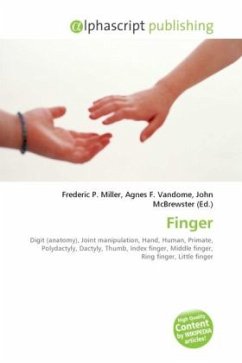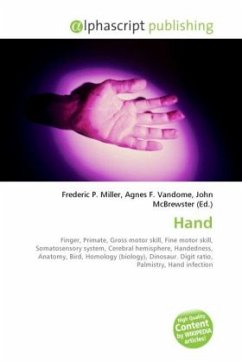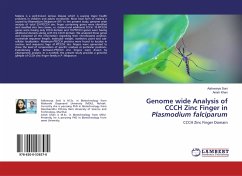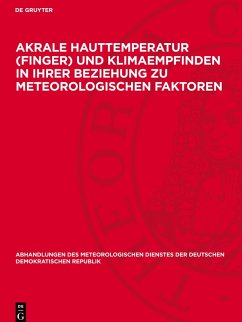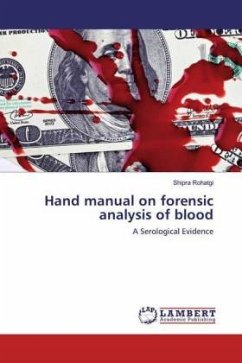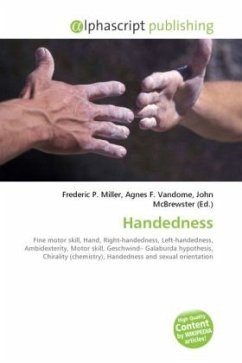
Snap Fingers
Versandkostenfrei!
Versandfertig in 6-10 Tagen
19,99 €
inkl. MwSt.

PAYBACK Punkte
10 °P sammeln!
Please note that the content of this book primarily consists of articles available from Wikipedia or other free sources online. Each finger may flex and extend, abduct and adduct, and so also circumduct. Flexion is by far the strongest movement. In humans, there are two large muscles that produce flexion of each finger, and additional muscles that augment the movement. Each finger may move independently of the others, though the muscle bulks that move each finger may be partly blended, and the tendons may be attached to each other by a net of fibrous tissue, preventing completely free movement...
Please note that the content of this book primarily consists of articles available from Wikipedia or other free sources online. Each finger may flex and extend, abduct and adduct, and so also circumduct. Flexion is by far the strongest movement. In humans, there are two large muscles that produce flexion of each finger, and additional muscles that augment the movement. Each finger may move independently of the others, though the muscle bulks that move each finger may be partly blended, and the tendons may be attached to each other by a net of fibrous tissue, preventing completely free movement. This is particularly noticeable when trying to extend the fourth digit with the others flexed. Fingers are usually moved under conscious control. In humans, they are used for grasping, typing, grooming, writing, caressing, and many other activities. They are also used in signaling, as when wearing a wedding ring, finger counting or when communicating in sign language.



